Thirsty emus look to smart solar for their daily drink
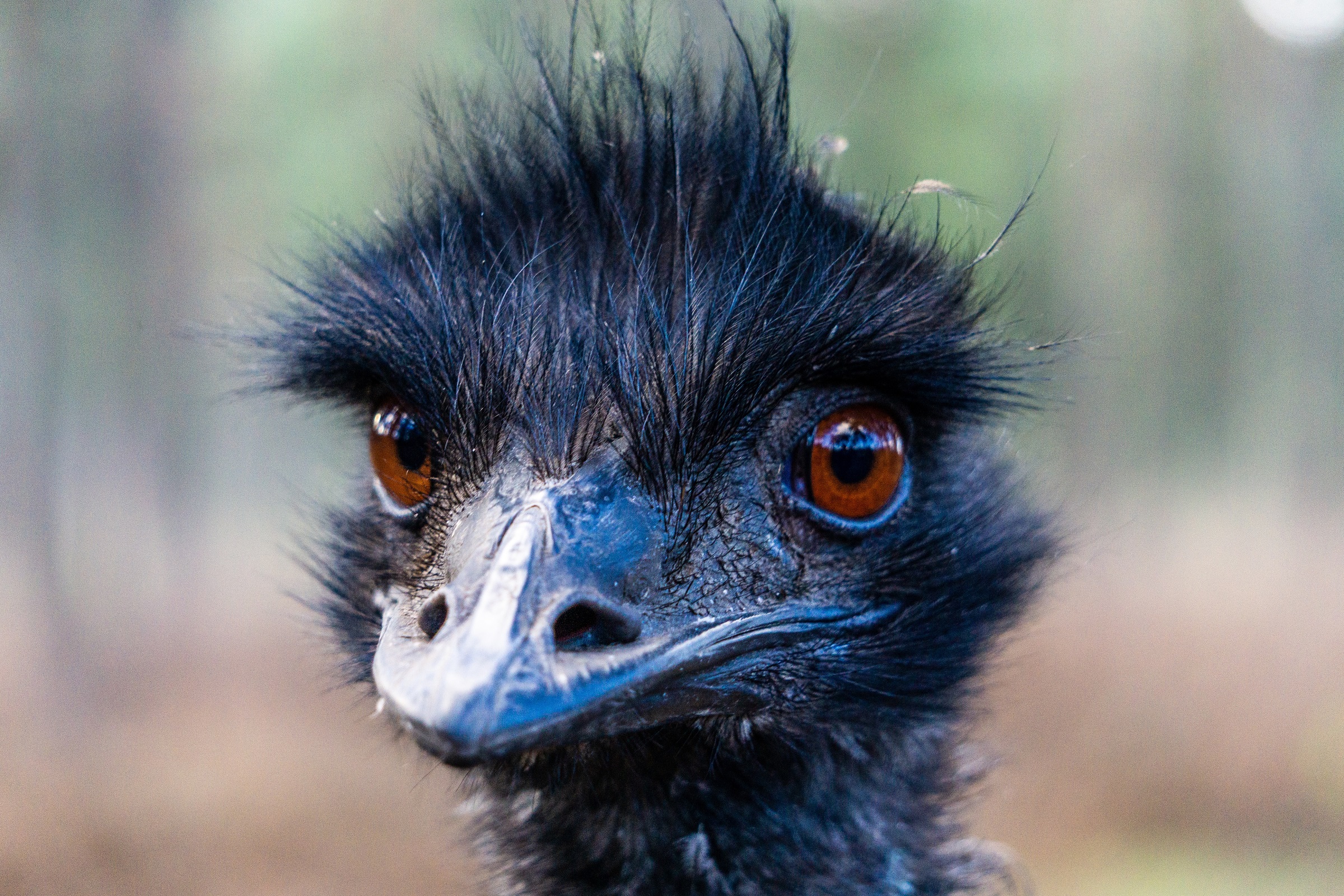

Solar energy and emus belong together
These ancient birds – reaching between 1.6 and 1.9 metres tall, and capable of sprints up to 50 kph – have pecked a living from grasses, fruits, native plants, and insects as they have roamed our sunlit plains and woodlands for millions of years.
In the wild, they can survive extended periods between drinks, consuming up to 18 litres of water when available. But they have a very high water requirement in very hot weather and also benefit from regular supplies of refreshment to attain ideal condition when farmed for their meat, skin, oil, eggs, and feathers.
“The wild population of emus – estimated at a healthy total of more than 600,000 – is protected by law. All birds used for commercial emu farming must be derived from farm-reared or captive stock, with these prized creatures getting a generous diet of ideal foods and a regulated daily drink to ensure they are healthy,” says irrigation specialist Peter Kidgell of the Yarrawonga branch of the national Water Dynamics organisation.
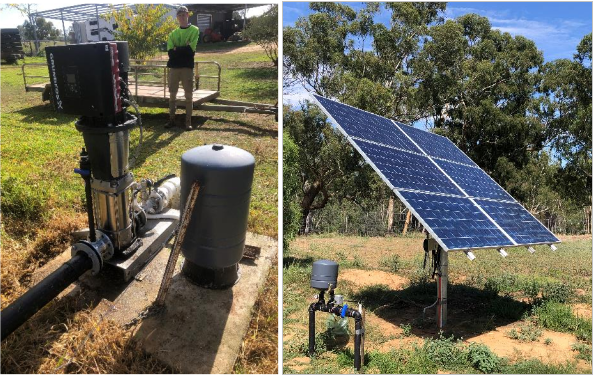
Peter was involved in a solar-powered irrigation project in partnership with Damien Kennedy Irrigation near Mulawa in NSW to help ensure the sustainability and cost-efficiency of an emu farm at Mt Gwynne stocking up to 300 birds.
Grundfos Solar Q pumping technology, left, and an automated solar array, right, that delivers the right amount of water at the time it is needed, with PLC control allowing this to be remotely adjusted according to conditions.
The technology involved – which he says has performed outstandingly well in its first year of service – is of an automated, remotely controlled integrated installation of a type that can be customised to other poultry and livestock industries needing assured daily supplies of water, delivered as efficiently and as sustainably as possible.
Central to the project is a PC-controlled array of 10 solar sets powering the 10 Grundfos Solar Q Submersible Solar Pump installations which draw water from a dam supplied by the river Murray. Each set is complete with six panels (Max 150LPM/500kPa) powering the submersible pumps, which are of a range that can be automated for solar or wind power, depending on the location and type of installation.
These pump and solar array sets automate water supply to stock troughs in six paddocks, each of which also features an integrated and automated hydrant to supply water at zero running cost, says Peter Kidgell. Excess water supply from the Solo system feeds back to the farmer’s dam, where a Grundfos Hydro Solo E system drives another pump set.
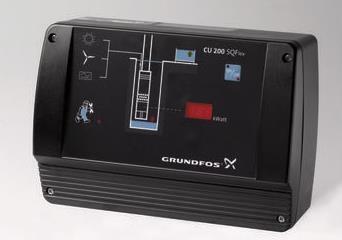
The system delivered is a complete package, extending from pumps, array frames, mounting poles, long-life polyethylene pipes and risers, and plug-and-play connections. It includes a Grundfos CU 200 SQ Flex controller incorporating status and simply operated control arrows for the power supply and float switch connection for the connection used to detect the level of a liquid in 18-litre pressure tanks. The system can be precisely programmed to send an alarm if the liquid level becomes too high or low.
The beauty of a complete package such as this is that everything in it is optimised to work best with everything else on the particular system involved. With irrigation, one size or package type definitely does not fit all.
A complete integrated and customised package takes full account of a host of factors, including site conditions, varying operating needs, and simplifies the skills needed to operate it. It also needs to be backed up with local on-site service as required and as the opportunity arises for a system can be upgraded in line with the onward march of technology. This is important, because irrigation technology is evolving as farmers of all types adapt to national imperatives, including metering requirements and the business need to get more productivity and sustainability out of less water,” says Peter Kidgell.
Water Dynamics – which operates through six sites with services extending from Tasmania and South Australia and the East Coast States up to the Northern Territory – sees efficient irrigation is a critical input for agricultural production, playing an important role in food security in Australia and abroad.
“Given population growth and the need for food export growth in Australia, it is widely expected that the agricultural sector here will have to expand the use of irrigation over the years ahead,” says Peter. This will become even more important as we have entered the El Nino drier phase of our climate patterns which is expected to have a rising impact in the years ahead on this, the driest inhabited nation on earth.
Even the hardiest of creatures – and emus have survived here for up to 80 million years – need their share of available water.
These are big birds – the second biggest on earth behind their close relation, the ostrich – and at just a year old typically reach between 30 and 40kg each. At that size, these ancient creatures really do appreciate the regular drink that modern technology can deliver.
Contact Water Dynamics today (https://waterdynamics.com.au/about/contact-us/) to discuss your non-urban water metering requirements and how our products and services can assist you in optimising your water management system for a sustainable future.
Water Dynamics
E [email protected]
Latest Projects
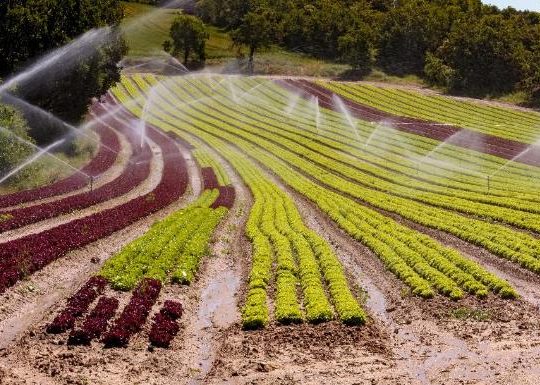
Early adopter of citrus growing automation achieves cost-efficiency, connectivity, and conservation in the one package
An Australian citrus grower at the forefront of automation efficiencies sweeping through the industry is increasing production quality and output…
Read More...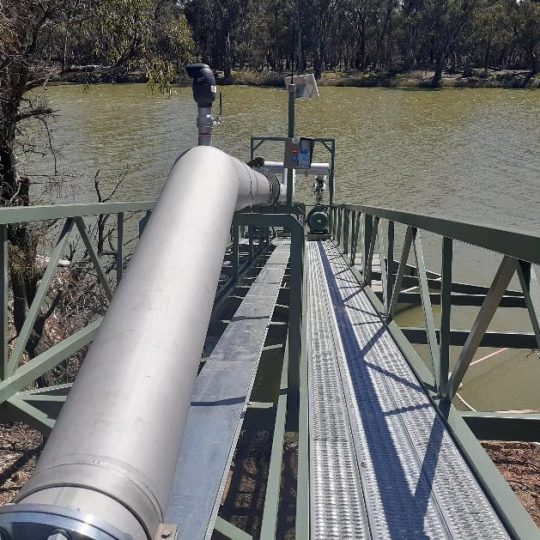
Premium table grape producer Palm Vineyards equips itself for a sustainable future with 3-into-1 irrigation upgrade
An international exporter of Australian table grapes noted for the quality of its fruit and sustainability of its horticultural practices,…
Read More...